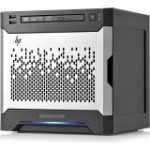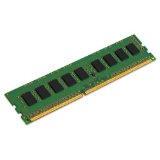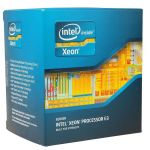HP Microserver Gen8 Processor FAQ
http://homeservershow.com/forums/index.php?/topic/6596-hp-microserver-gen8-processor-faq/
This guide is a work in progress. After reading some other people's questions about processors for the Microserver Gen8, including "What's the best choice for ESXi or HyperV use?" I wanted to create some sort of basic guide. For those of you who are geeks, you'll love this. If you're ADD or in the TLDR crowd, skip this thread. ![]()
The HP Microserver Gen8 comes with one of two processors stock:
The Intel Celeron G1610T (2.3GHz, 2MB cache, Ivy Bridge)
http://ark.intel.com...-Cache-2_30-GHz
The Intel Pentium G2020T (2.5GHz, 3MB cache, Ivy Bridge)
http://ark.intel.com/products/71069
Neither are incredibly special, but for a home server running Windows Home Server, Windows Small Business Server, Server Essentials, or FreeNAS, they should do quite well. Performance diferences should be minor between the two. But, what if you want to run virtual machines via a hypervisor like VMWare ESXi or Microsoft Hyper-V Server? Neither of these two CPUs are exactly ideal, as they are missing some of the features of enhanced processors like VT-d instructions, the cache is small, and you have two CPU cores with no hyperthreading support. At this point, an upgrade sounds like a good idea --but what do you choose?
The answer to the question all depends on how many VMs you want to run simultaneously on your hypervisor and what their purposes will be. Tasks like SQL Server, Microsoft Exchange (at least, above a certain number of users), or an applications server require more horsepower than say, a basic domain controller (which even with DHCP, DNS, and other mainstream services, doesn't take a lot of load).
One of the requirements *is* purchasing a CPU with ECC support; this negates many, if not all standard Core i3/i5/i7 processors. Note also, the Microserver Gen8 has a 150w power supply and a 35w TDP fanless heatsink design, something to keep in mind when upgrading --trying to slap in a 95w CPU probably isn't a wise decision.
The Microserver Gen8 has a Socket 1155 platform, and will support Xeon E3 (Sandy Bridge) and Xeon E3 v2 (Ivy Bridge) processors --Xeon E3 v3 (Haswell) processors are a different architecture with a different socket (Socket 1150) and are *not* supported. IMO, these are the five processors to consider when upgrading the HP Microserver Gen8:
Xeon E3-1220L (2 cores, 4 threads, Sandy Bridge)
Xeon E3-1220L v2 (2 cores, 4 threads, Ivy Bridge)
Xeon E3-1260L (4 cores, 8 threads, Sandy Bridge)
Xeon E3-1265L v2 (4 cores, 8 threads, Ivy Bridge
Xeon E3-1230 v2 (4 cores, 8 threads, Ivy Bridge -see caveats)
The L variants of the Xeon family are low voltage. While the 1220L's are not as powerful, they are very low power (20w TDP for the SB, 17w TDP for the IB). This is great if you're only running two VMs and if you want to pack the server to the gills with other items (e.g., more than just the four standard drive bays). The 1260L and 1265L pack more power, but have a 45w TDP, ten watts above the rating of the heatsink in the unit. Still very usable as others testing have found.
The Xeon E3-1230 v2 (4 cores, 8 threads, Ivy Bridge) is a fifth choice. It is less expensive, and people have done this upgrade with success. However, it has a 69w TDP, and I tend to be of the conservative sort --I want as much power envelope left as possible for other devices (RAID controller, extra drives, optical drive), and I also want a cushion that doesn't exceed the heat removal capabilities of the box. If you aren't planning on adding much to your server though, it may be a good choice.
As for Sandy Bridge vs. Ivy Bridge, here's the basic rundown. The Sandy Bridge Xeons have one basic advantage --their heat spreaders are soldered to the CPU die using a fluxless solder process. This provides for more efficient heat transfer. While the Ivy Bridge Xeons would in theory run cooler if this process was used, Intel went cheaper, and now uses thermal paste between the spreader and the die. This means that Ivy Bridge processors actually don't run much cooler than Sandys under load, if at all. Note: If modding is your game, some enthusiasts have managed remove the heatspreader from Ivy Bridge CPUs, allowing direct contact with the CPU die and lowering the heat, or replacing the thermal interface material with higher quality stuff. Do this at your own risk - this VOIDS your CPU warranty and could damage the processor.
On the other hand, Ivy Bridge processors have the following (note: these may provide only negligible improvements depending on the change)
PCIe 3.0 support (probably not necessary even when using a RAID controller or graphics card)
Improved AES-NI instructions (if you are using encryption such as Bitlocker or TrueCrypt, this would be a plus, otherwise negligible)
Improved Floating Point instructions
Improved Intel QuickSync performance. NOTE: Not all of the processors listed have QuickSync (only the 1260L and 1265L v2 do) as not all of these have onboard graphics. Note also that due to the architecture of the Microserver Gen8 (which uses Matrox video rather than Intel Graphics as its primary) that I'm not aware that anyone has tested a QuickSync-equipped processor to confirm that these features operate correctly when such a CPU is in the system. However, should they work, the 1260L and 1265L v2 have the potential to provide a considerable boost to video encoding/transcoding performance if you use an application that supports it; the 1265L v2 will have probably a 20-40% performance increase over the 1260L in this area.
For complete CPU specifications on the Xeon E3 families, check out the following links:
Xeon E3 1200 (Sandy Bridge) family:
http://ark.intel.com...ts/series/53495
Xeon E3 v2 1200 (Ivy Bridge) family:
http://ark.intel.com...2-Family/server
Wikipedia also has excellent links if you search for "Sandy Bridge", "Ivy Bridge", or "Xeon" to explain history and architectural changes.
Note: Something I did not realize until working more deeply today when replacing my Gen8 Microserver's processor.
If you *do* wish to use Bitlocker or some other types of hardware encryption, one of the general requirements is having a system with a TPM (Trusted Platform Module). Plenty of modern enthusiast mainboards have this; the Microserver Gen8 does not. It is a purchasable option, with a general price of around $45-50.
HP's part number is 488069-b21, which is meant for broad compatibility across the Gen8 line of servers. The part is a small daughtercard that connects to a TPM connector on the mainboard. As part of the procedure, a plastic rivet is also used in the installation. This rivet holds the TPM in place, and is designed to deform or break if the TPM is removed, to make you aware that security has been breached. Once the TPM is attached, it is paired to the mainboard for life, and should not be removed. Should HP need to replace your mainboard under warranty, you should notify them that you have a TPM so they may provide you with a new one for the new mainboard; the original TPM should remain paired with the original board, per HP's own instructions.
The AES New Instructions are still useful in some other applications, but if you are looking to do full disk encryption, you will wish to purchase the TPM module as well.
Two additional "should-work" processors:
Intel Core i3-3220T (2.8GHz, 2 cores, 4 threads, 35w TDP, Ivy Bridge)
http://ark.intel.com/products/65694/
Intel Core i3-3250T (3GHz, 2 cores, 4 threads, 35w TDP, Ivy Bridge)
http://ark.intel.com...-Cache-3_00-GHz
These processors are among the rare subset of Intel desktop CPUs that support ECC memory; you could think of them as very stripped-down versions of the Xeon E3-1220L v2. Both of these processors lack Intel VT-d, so they're not super choices for VM hypervisor work; unlike the Xeon, they also lack Turbo Boost dynamic clock scaling for higher single-threaded performance. They do bring Hyperthreading and QuickSync to the table. If you're buying a brand new CPU, they wouldn't be on my list as you're already partway to the cost of a new or used Xeon E3; however, if you're pulling one from another system or come across one cheap, they will improve performance over the original processors.
I've had my 1265L v2 for about a month, it's been a great upgrade. I do think it is probably the best CPU upgrade for the MS Gen8, followed closely by the 1260L, and then (if low power is a concern) the 1220L v2.
Either way, I haven't found that the 1265L v2 is causing a heat problem in my system. However, I was willing to spend more for an L-series processor over the Xeon E3-1230 v2 for the same reason you went with the 1260L; I considered a 24-watt TDP increase to be unacceptable for my configuration, especially considering the power draw and possible heat from other components.
Consider though, the reason for the L variant is low voltage, and therefore, lower TDP. Keep in mind, the heatsink of the Microserver is designed for a max 35w TDP processor. The Xeon E3 1220L v2 is well within this at 17w, of course, it's a 2-core/4-thread processor. The Xeon E3-1260L and 1265L v2 are 45w TDP processors; above the envelope, but not significantly so, and they're 4-core/8-thread CPUs, quite a bit of processing power.
The Xeon E3 1220 v2 is 4 cores, 4 threads (no Hyperthreading --and (like the Xeon E3 1230 v2 which is 4 cores, 8 threads) it's got a TDP of 69w. That's 34w above the rated TDP of the heatsink, and at that point, I myself am not totally comfortable with that idea, especially when you take into account the following:
- You're going to want to load your system with drives, most likely. Probably all four bays, and maybe, if you're having fun, two more with the SchoonDoggy Drive Bracket. You've got to look at thermal dissipation as a whole, not just from a processor perspective, and drives add heat. If you decide you want performance drives (say, Western Digital RE-series, Seagate Constellations, or WD `Raptors), the heat goes up further still. Hardware RAID adds another CPU as well, and that CPU gives off heat of its own.
- Consider that the Microserver Gen8 has a 150w power supply. Start adding up what your Xeon E3 v2 (non-L) processor consumes under load, plus drives under load, plus peripherals (e.g., RAID controller or other expansion card) and at some point, you're putting additional stress on the power supply. Maybe it can handle it --but if you're putting it at the edge for periods of time, you're probably going to shorten its lifespan.
- Consider what your environment is going to be. If you're not in an air-conditioned house/apartment and you have warm summers, adding that heat to your server may pose an issue for a portion of the year. And there's only so much you can do to remove warm air from a device the size of a breadbox, with possibly limited channels for airflow.
In the enterprise, people focus on reliability and uptime - and they focus on efficiency (keeping heat low, keeping power supplies within an efficient envelope) which also has a positive effect on that reliability and uptime. I know we're talking about home servers here so I'm stretching it a tad, but it's always good to look at what a system was designed to handle. Personally, I think the Xeon E3-1220 v2 isn't a great value in terms of performance (no Hyperthreading), or efficiency (69w TDP) when it comes to the Gen8.
With my Xeon E3-1265LV2 I was satisfied (you need to decide what operating temp range you are satisfied with) with the temp’s I was seeing when I used the Increased Cooling setting in BIOS and have not considered disabling my TurboBoost. See:
HP ProLiant Gen8 MicroServer: Xeon E3-1265LV2 CPU Upgrade
My PlayList for System Board Heat Sink CPU Remove-Install HP ProLiant Gen8 MicroServer
AND Check out this collection of Temp Studies that Include minehttp://homeservershow.com/forums/index.php?/topic/6762-anyone-who-has-changed-the-heat-sink-on-a-gen8-microserver/page-3#entry77590You’ll also find links to some additional cooling solutions (i.e. adding additional fans to the CPU Heat Sink etc.) in that page -- and a number of Forum members have employed them to be able to use the Optimal Cooling BIOS setting,YMMV.
Be sure to check out the relevant threads starting on CSKenney’s page that started the thread ProLiant MicroServer Gen8 Links and the Gen8 Forum and the MicroServer General Forum
I don’t know of anyone in the Forums who has turned off the TurboBoost on their E3-1265LV2.
Please could you tell me if the E3-1270 V2 CPU is an option?
It will likely work. However, as mentioned before, I don't advocate 69w TDP processors in the Microserver Gen8. You're much better off with a 45w TDP processor; the passive heatsink is only designed for 35w TDP processors.
The 1260L should be one of the cooler running quad-cores due to the heatspreader being attached with fluxless solder to the CPU die. In comparison, the newer 1265L v2 which I am running probably would run warmer under load, even though it's a lower-micron process, due to Intel switching to thermal interface material between the spreader and die.
I have never lapped my HP heatsink. If the surface of yours is even, there shouldn't be a need, especially if you use quality thermal compound, such as those available from Noctua or Thermalright.
The Gen8 doesn't use the Intel CPU's graphics at all. It uses the truly ancient Matrox G200 built in to the iLO chip. I doubt any modern Linux has drivers for a 15+ year old Matrox.
The only way to get better graphics performance it to fit a real GPU in the PCI-E slot.
Does the Micro Server Support Non ECC RAM ? ( and therefore CPU)
No Non-ECC RAM, only ECC unbuffered RAM
Lowest power CPU is E3 1220L v2 17w TDP, but either expensive or hard to come by
The Gen8 uses about 10W more than a more modern miniITX machine with a fast Haswell CPU. The iLO and the extra two NICs use extra power, and the Sandy Bridge CPU uses more power.
For example, sitting in Windows with a single drive a G1610T Gen8 will use about 35W. An i3-4350 on a B85 board with the same RAM and drive will use 22W. The i3 is dual core 3.6GHz with Hyperthreading. The G1610T is dual core 2.3GHz.
The HP Proliant Gen8 is a great upgrade from the well known NxxL series. With two or three Systems you can build a reliable homelab and start to play around various VMware features. You can create a cluster, try vMotion, HA, DRS and resource pools or even create your personal vCloud or VDI environment. When you have an additional SSD, you can use vSAN to transform the local storage into redundant shared storage. The server runs pretty quiet, so you can run it near your desk.
Shopping Guide
HP Microserver Gen8 Processor FAQ的更多相关文章
- 制作HP MicroServer Gen8可用的ESXi 5.x SD/TF卡启动盘
前些日子看到HP公司和京东在搞服务器促销活动,于是就入了一个 ProLiant MicroServer Gen8 的低配版 相比上一代产品,新一代 MicroServer系列微型服务器可更换处理器,还 ...
- 用Gen8服务器来学习虚拟化ESXI
虚拟化和云计算是这几年的热门技术,VMware公司是虚拟化的领头羊,小坦克我有幸在VMware从事这方面的测试工作. 本系列将会讲述我学习虚拟化的一些经历. 将会覆盖一些虚拟化产品: 比如:VMwar ...
- 自己家里搭建NAS服务器有什么好方案?
转自:https://www.zhihu.com/question/21359049 作者:陈二发链接:https://www.zhihu.com/question/21359049/answer/6 ...
- 家用NAS配置方案
对家用用户而言,NAS即一台下载机,硬件需要满足以下几点: 1.稳定性:24×7稳定无故障运行. 2.拓展性:较多的硬盘槽位,便于容量扩容: 3.体积小巧:占地面积小,便于放置. 4.方便远程管理:无 ...
- GUID vs INT Debate【转】
http://blogs.msdn.com/b/sqlserverfaq/archive/2010/05/27/guid-vs-int-debate.aspx I recently read a bl ...
- 在Linux服务器上增加硬盘没那么简单【转】
运维案例:HP服务器,LINUX系统在保障数据的前提下扩展/home分区 部门需求:研发部门提出需要在现有的服务器上扩容磁盘空间,以满足开发环境的磁盘需求.现有空间1.6T需要增加到2T. 需求调查分 ...
- HP Gen8,9 型号系列服务器更换主板
更换主板前,记下如下信息,根据具体情况用于更换后的设置用.1.S/N (其实主机箱上会写有,更换后重置)2.ProductID (其实主机箱上会写有,更换后重置)3.iLO IP地址或者MAC地址(根 ...
- HP “云图”GPU虚拟化工作站解决方案
HP PCS ”云图”GPU虚拟化工作站解决方案 ——将图形计算从桌面移到数据中心 惠普云图形GPU虚拟化桌面系统是以用户为中心的私有云服务.除了保留了传统桌面虚拟化方案以集中设备为中心统一管理等优点 ...
- hp unix_ssh
http://www.cyberciti.biz/faq/howto-hpux-sshd-service-startup-shutdown/ http://searchnetworking.techt ...
随机推荐
- 使用gradle编译安卓APK
一.安装JDK 在安装Gradle之前需要先安装JDK,由于安装的是Gradle是4.4所以需要安装JDK1.8. 之前编译总是提示如下错误就是由于先安装的jdk1.7然后安装的1.8造成的,在Gra ...
- TCP连接建立与断开
tcp状态 LISTEN:侦听来自远方的TCP端口的连接请求 LISTEN:侦听来自远方的TCP端口的连接请求 SYN-SENT:再发送连接请求后等待匹配的连接请求 SYN-RECEIVED:再收到和 ...
- SQL CAST与CONVERT区别
CAST 和 CONVERT 将某种数据类型的表达式显式转换为另一种数据类型.CAST 和 CONVERT 提供相似的功能. 语法 使用 CAST: CAST ( expression AS data ...
- MySQL学习笔记:while循环
思考:while循环是否只能使用在存储过程或者存储函数之中,不能直接在查询语句中使用? ———— 循环一般在存储过程和存储函数中使用. 直接放几个例子: 例一: 1.创建存储过程 DELIMITER ...
- iOS网络加载图片缓存与SDWebImage
加载网络图片可以说是网络应用中必备的.如果单纯的去下载图片,而不去做多线程.缓存等技术去优化,加载图片时的效果与用户体验就会很差. 一.自己实现加载图片的方法 tips: *iOS中所有网络访问都是异 ...
- **汇总CodeIgniter(CI)的数据库操作函数
//查询: $query = $this->db_query("SELECT * FROM table"); ================================ ...
- 转发:RocketMQ与kafka的对比
淘宝内部的交易系统使用了淘宝自主研发的Notify消息中间件,使用Mysql作为消息存储媒介,可完全水平扩容,为了进一步降低成本,我们认为存储部分可以进一步优化,2011年初,Linkin开源了Kaf ...
- 30分钟LINQ教程的学习笔记
原文章 : http://www.cnblogs.com/liulun/archive/2013/02/26/2909985.html 一.11个与LINQ有关的语言特性: [隐式类型.匿名类型.对象 ...
- 链路跟踪技术traceId的总结和实践
目录 写作背景 什么是链路跟踪 目前常见的链路跟踪技术及其优缺点 链路跟踪技术的实现原理 代码示例 背景 由于最近系统上线后,访问量达,出现线上问题后往往无从下手排查,即使打印了很多日志,依然无法快速 ...
- TCP 建立连接为什么要握 3 次手?
上次已经说过,没有协议,不成方圆,计算机之间的通信更是依赖于协议.今天就重点分析一下 TCP 协议. 传输控制协议 TCP 是一种面向连接的.可靠的.基于字节流的传输层通信协议,由IETF的RFC 7 ...



